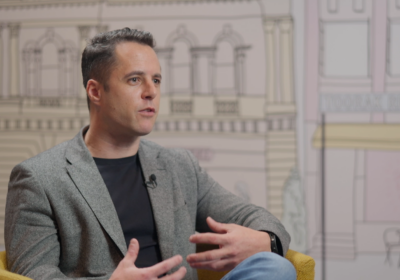This article was updated in February 2022.
On a fashionable corner of New York’s Meatpacking district, an experiment in buzz marketing is taking shape. PepsiCo’s Kola House, a lounge and event space is set to open this fall, with plans to offer music events and more in an effort to polish the soft drink company’s image with influencers.
Kola House and its music events (where Pepsi is leveraging a partnership with music promoter Live Nation) are part of a strategy to encourage social media sharing, said Seth Kaufman, CMO of Pepsi North America beverages.
Kola House “will be an amazing experience where influencers and people who have a big impact on culture go. They will be having fun, listening to music, tasting new products, and posting to their accounts,” he explained. “That then has a massive impact to the consumers who are never going to be able to even go in a Kola House.”
Pepsi is not alone. Many brands are increasingly looking to amplify their marketing messages by harnessing what used to be called word-of-mouth marketing.
Brands Turn to Influencers
In the digital era, it is “Influencer Marketing,” empowered by new websites, blogs, and social media platforms. And while traditional word-of-mouth marketing was a friend-and-family affair, influencers today can be found anywhere, thanks to digital media.
“Influencer marketing is hot, and many brands are incorporating it into their overall marketing strategies. However, the marketplace has widely different ideas of what influencer marketing actually is, when to use it, how to manage it, and what to measure. It’s messy,” said Stefania Pomponi, president of influencer marketing agency Clever Girls. “CMOs do not seem to understand, let alone have a shared definition of the practice. There’s lots of work to be done here.”
Brands are increasingly tapping the street cred of social media stars, and the Twitter followings of celebrities. But anyone can be an influencer. Consider that 62% of consumers actively seek the advice of others before trying new brands and products; 59% say others ask their opinion about the same, according to a recent survey.
Who’s a Real Influencer?
Many marketing studies show that regular people are seen as influencers in their social circle, so marketers can harness the power of influencers to move brands without having to sign up celebrity spokespeople or experts. And this trend can only snowball; a recent study by The Economist Group found 29% of the key Millennial cohort are what it calls “Gen-narrators,” individuals known for their ability to influence others in their circles, a higher share than among Gen X or the Baby Boomers.
And fans are not the only individuals who can advocate for a brand. Influencers can be found in many places, including in-house. Employees are increasingly being recognized as an untapped resource by marketers, and among companies that have tech-savvy CEOs, the blog from the corner office has been found to be a powerful tool.
If finding influencers is one concern, marketers have another big one: measuring and benchmarking success when using influencers. How to know when an influencer is moving the needle for the brand?
All in the Metrics
Most of the metrics marketers use to measure influencer efforts “are only surface-level,” said Pomponi. They include data such as impressions or engagements such as likes and shares, while the rich data that tracks actions such as purchases or time spent on follow-up require more powerful tracking and analytics, she said.
“Much like the early days of social/digital, proving the ROI of influencer marketing is the new barrier to entry. Clients have had mixed results and the definition of influencer marketing is broad,” said Jeremy Simon, director of influencer & partnership marketing at Attention, the social arm of agency KBS. “CMOs understand the idea of influencer marketing, but they are not tapping into the full potential. They are viewing it as a media buy, instead of an authentic relationship.”
As influencer marketing matures, it’s becoming a standard part of most marketing plans, say experts. But they add it needs to keep evolving to stay ahead of today’s digitally-empowered consumer.
“The real issue now is that Influencer Marketing can be so many things, so it requires a constant learning curve. The days of Influencer Marketing looking and feeling like a celebrity endorsement are long gone,” said Ashley Connors, group strategy director at agency StrawberryFrog. “Influencer Marketing is simply connecting brands to people in a more authentic way.”





Join the conversation